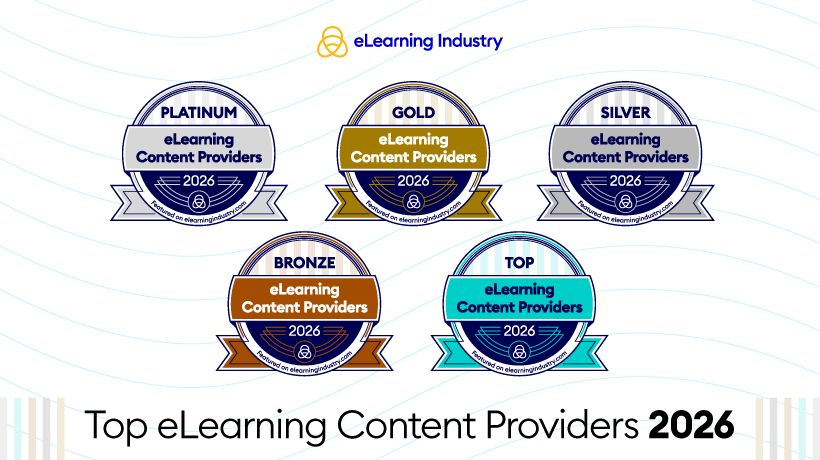To buy your eLearning or to make your own? 3 Options for eLearning content development
I was recently chatting with a client I’ve known for years. He’s just moved into a new training management job and said he was faced with a mess. Lots of out of date, ill regarded training programs with seemingly little cohesion or overall direction. He puts it down to local managers trying to do their best to develop training materials for their own teams in relative isolation from each other. The result is some ok training some that just about passes muster and quite a lot, which is just really bad. Oh yes, and a lot of seemingly duplicated training on almost exactly the same topics.I couldn’t resist a personal question – is he just trying to make an impact by being overly critical of everything that has gone before – making himself look good by ‘dissing’ his predecessors?He smiled and started to show me what he meant, it didn’t take long to see his point.Of course coming in new does rather give you an advantage. No wistful attachments to particular training methods or form factors, no inappropriate emotional ties to fondly remembered programs, no ego driven commitments to that bit of training that you were personally responsible for. But most important, it gives an enviable but arguably temporary ability to take the broad view, take a step back and survey the whole landscape before pitching in to the detail.One of the many issues my friend faced was how to get the eLearning he needed, buy it or build it? It’s an old question that most organizations periodically ask about many areas of their operations – why should eLearning be any different? The trouble is organizations often don’t think it through properly, instead relying on the past experiences and prejudices of key people. The hope is that if it worked well in the boss’s last job he can apply pretty much the same thinking in the new job.My friend didn’t want to fall into this trap, so we talked through the three main options open to him.
- "Off-the-shelf" eLearning ContentOff-the-shelf neatly divides into two; the large libraries of pre-prepared courseware for which you buy a subscription for a set number of people for a specified period. If you believe the salesman and his calculation of the cost per annum divided by staff numbers, divided by the number of courses on offer, then you will be impressed by how cheap your eLearning is. The problem is that one year on, you find that very few staff have bothered accessing the courses, and those that have complain that they are poorly produced, out of date and not relevant to their situation and job. Where off-the- shelf courses really can add value is where there is a particular, very focused specialist knowledge area with a small number of real experts. Here some form of eLearning delivery can leverage off that specialist knowledge with a benefit that outweighs any reduced relevance to a particular employee’s situation.
- "Create it yourself" eLearning ContentCreating your own eLearning can deliver the ultimate in relevance, with your own trainers and subject experts collaborating to produce eLearning that really hits the spot. The obvious considerations are what are the best uses of your resources? Do you have the money to invest in the tools? Do you have staff available to create and manage your own eLearning? Do you have the instructional design skills to do it successfully?A few key points:
- The good thing is that it will be much cheaper to buy or subscribe to licenses for authoring software than it will be to commission a specialist provider to develop your courses for you. The larger the number of courses, the cheaper self-authoring appears. But, there’s a but. Add in the cost of using your own staff to create eLearning and the cost can climb steadily as the number of eLearning courses climbs. This may be fine where perhaps you have some under-utilized trainers who can usefully work on authoring materials alongside the day job, or even where you can draw on volunteers to contribute. But otherwise you will need a team of internal authors and testers together with managers to ensure utilization is high and quality and production standards met.
- If you only ever want a few courses and have a small or single person authoring team, then a standalone tool is fine. But if you want to produce in scale, then make sure you pick an authoring platform, which allows collaboration between authors, editors, testers, reviewers and approvers. Efficient workflow is vital to enable volume creation, and eLearning can be notoriously difficult to manage, control and review without effective collaboration support.
- HTML5Surely it’s not still necessary to make the point, but there are still Flash based authoring tools out there. Flash based eLearning doesn’t work on tablets or smartphones. Tablets are taking an increasing proportion of the new device market. eLearning costs a lot to create. Do you want future flexibility on who can access your eLearning? The answer is to avoid Flash unless you have a very specific reason to use it, which outweighs the disadvantages.
- Ease of useIf you want to use trainer types rather than professional programmer types, then ease of use is a must. Go for a tool that is quick to get started on, but that also has the full range of functionality to keep experienced authors happy.
- Quality is kingIt has to be engaging, interactive and educationally great as well as looking good.
- Training and ongoing supportMake sure you can get whatever training you might need from your supplier. This obviously includes comprehensive product training but also instructional design skills. Ongoing support will also be important if you want to stretch the boundaries and move outside the box, so access to second line support and perhaps even to the software development team can be very useful.
- "Commission it from a specialist eLearning provider" eLearning ContentThis is probably the usual path for most organizations. The cost can be high, so choose your supplier carefully. Remember you are paying for their toolsets, their experience and their time, and eLearning does take time to produce if it is to achieve the learning objectives.Different suppliers will adopt different engagement models. My own Company uses the Luminosity Studio eLearning authoring tool to produce large numbers of courses, although it supports Flash based assets, we use it mainly to output HTML5 courses. We usually interface with the client’s or third party subject matter experts to extract the source content. Specialist eLearning Instructional Designers work with them to design and build the courses. We’ve found this to be a fast and efficient process which gives good results, but there are other ways of doing it – just make sure you know what the process is going to be and that you are comfortable with it and that it will work for you.Any good supplier worth their salt will be able to advise on mobile considerations. But this is an area with a lot of potential practical pitfalls. So if mobiles (ie tablets or smartphones) are important to you now, or may be in the future, then make sure you pick a supplier with real practical experience who knows all about the ‘gotchas’ and can provide proven end-to-end solutions rather than someone who just talks about it.Other things to be on the lookout for include:
- Quality and referencesCheck out who else they are working with and how recently they have been working with them. Customer lists can be misleading – I came across one which listed a customer that this particular company hadn’t dealt with since the last century! Pick out some current, relevant references and follow them up with a phone call or two. Ask about the educational effectiveness of the learning, the production quality, the supplier’s flexibility and ease of working with.
- StabilityThe eLearning market place is typified by a lot of very small producers and a small number of large ones. But even the larger ones aren’t very large. If you want an ongoing relationship, security of supply, resilience to individual personnel issues, then you should go for one of the large players, check out their accounts and credit references and don’t be afraid to ask them to convince you that they will be there for you into the future.
- PriceThis varies so much that it merits a separate blog – but think about who supplies the source content, the timescales, the production values, the media content elements and the volume of a production run. All have an impact and with some judicial juggling you can save a lot of budget.
- Courseware maintenanceIn the bad old days the supplier kept the source files and if you wanted any updates done you would have to ask them nicely to help you out. HTML5 is open source and can be maintained by any suitably capable supplier. You may even like to buy a few authoring licences to enable you to update the courses yourself, or at least give you the peace of mind that you could if you wanted to! In any event, make sure you nail the maintenance issue before signing any purchase orders.
Final ThoughtsStandard off-the-shelf courses usually don’t go down well unless they are higher value specialist training areas, so I’d advise avoidance of large libraries of disparate courseware. If you only need a few courses a year, then employ outside specialists. They’ll do it faster, more reliably and to a better quality standard than an isolated, internal enthusiast. But if you want more courses and foresee a longer term need for new courses then make sure you weigh up the full costs of self-authoring and compare with the full cost of buying in.My friend decided to base his strategy on outsourcing the curriculum design and the actual eLearning course development, with courses based on internal subject matter expertise. This meant he could focus his existing internal staff on accelerating the whole program whilst drawing in specialist skills to implement what he wants to achieve. He decided to supplement this with a few authoring licenses to give him added flexibility should he need it. For him it’s still early days and it’ll be interesting to see how it works out, but as a basis for a strategy I feel confident that in his situation he’s on the right path.









